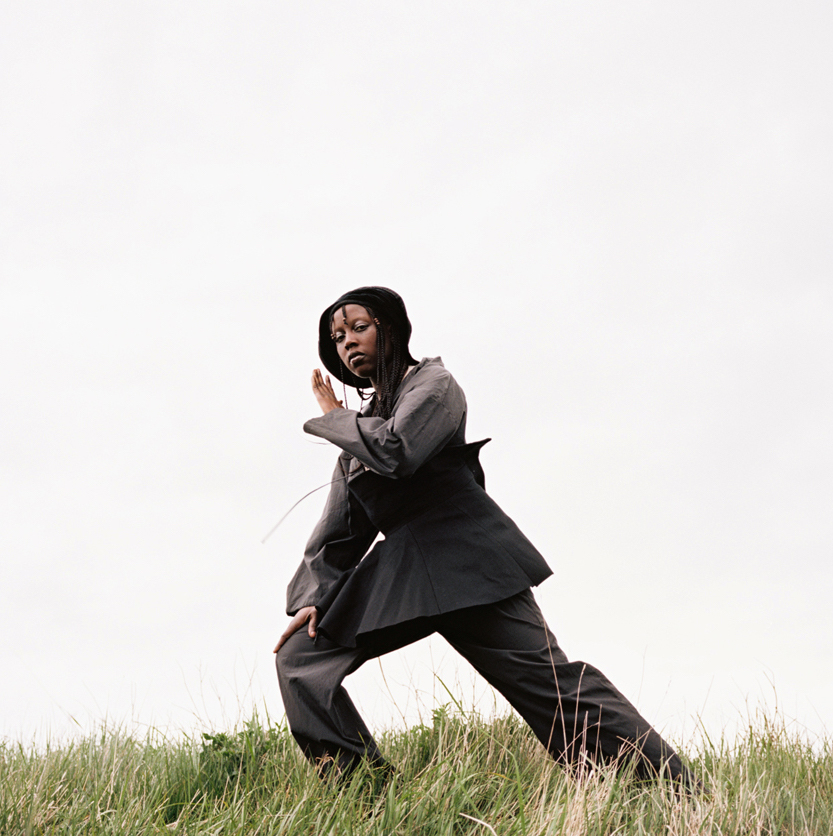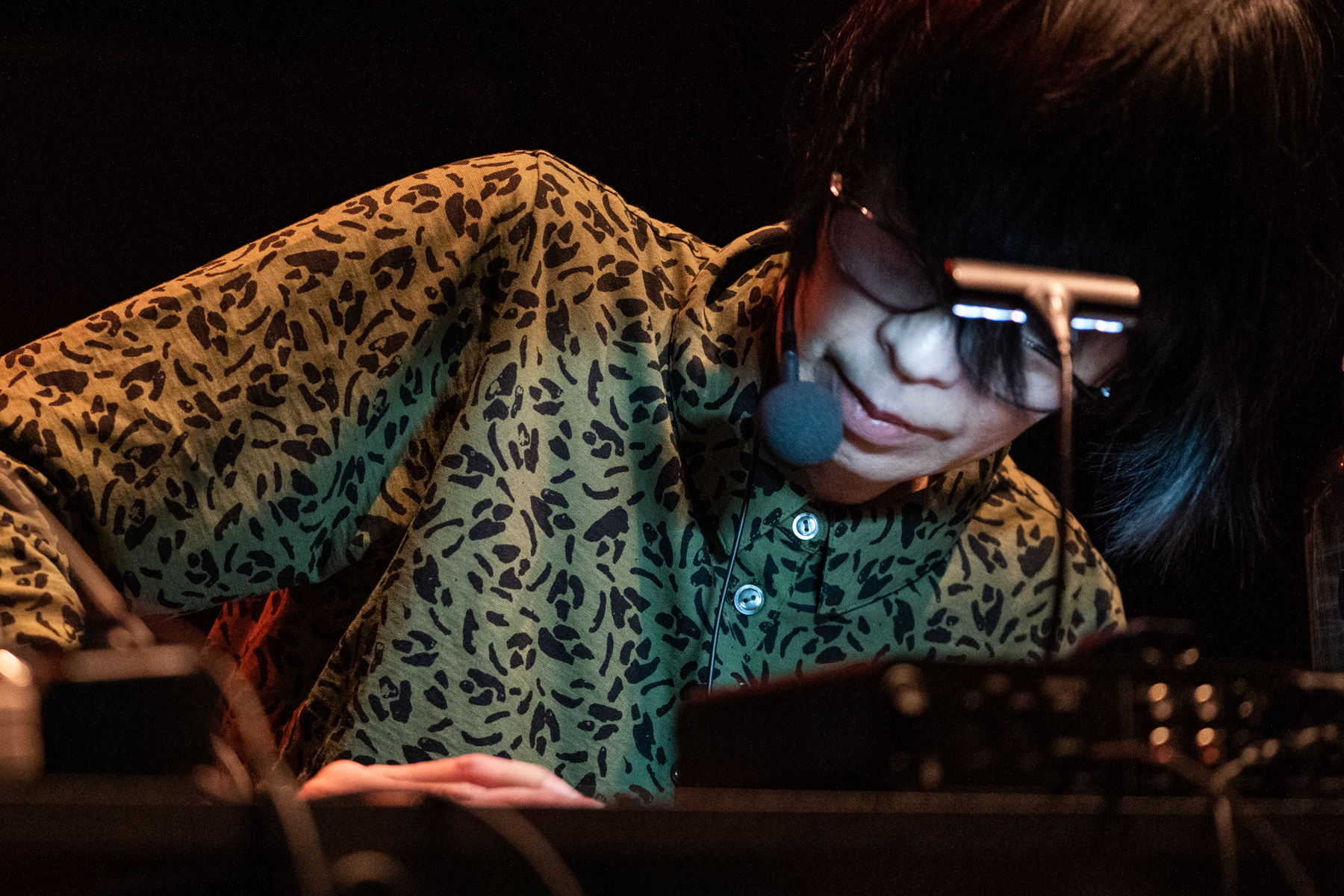Insomnia Festival – Northern Exposure (live report)


Insomnia Festival 2018, Tromsø. Reportage by Ivna Franic, 135 mm analogues by Lea Anic.
It’s near impossible to talk about the world’s northernmost festival of electronic music without highlighting its distinct geographical position and landscape, so let’s just get that out of the way. Taking place in Tromsø, Norway, a city located some 350 km north of the Arctic Circle, Insomnia is bound to immediately delight any foreign visitors simply by its backdrop: a small city packed with old wooden houses and surrounded by the sea, the mountains covered in snow, the possibility of Aurora Borealis sighting looming in the air… It’s perfect, it’s beautiful, it looks like Linda Evangelista.
Despite its impressive tourist predisposition, however, Insomnia very much feels like first and foremost a local affair. With most of the program going down at the student-run venue Driv and the audience being largely made up of the city’s booming student population, the festival naturally has a refreshingly lively vibe to it as opposed to many cutting-edge club music gatherings that end up too restrained for their own good. (Even the infamous Norwegian alcohol restrictions don’t seem to tighten up the atmosphere, except for the occasional awkward scene of drunk people being taken away by authorities.) Now in its 17th (!) year, Insomnia really is an integral part of city’s cultural life and the organizers seem to be dedicated to maintaining this two-way relationship by offering many regional acts an opportunity to take the stage and keeping a balanced, international lineup that offers a little bit of something for everyone without ever seeming unfocused or all-over-the-place.
Things were off to a strong start the first evening, and due to a concise but extremely tight lineup some acts that would later turn out to be festival highlights were featured very early in the game. Caterina Barbieri (Important Records, Cassauna) captivated the audience with her hypnotic synth compositions. Altough her records might sound somewhat meditative when listened to at home, the live show slowly developed into a proper albeit beatless party warm-up, showing an often overlooked side to Barbieri’s music. The prospect of things further heating up unfortunately faded by the time Berlin-based Argentinian artist Catnapp took the small bar stage. Her playful blend of r&b, rap, pop and whatnot sounded way less exciting in practice than it perhaps does in theory, making her seem a bit out of place among the evening’s verified heavyweights. That her performance was followed up by the frenetic FAKA show did little to help.
If you didn’t know FAKA (Non Worldwide) had two frontmen, you would be forgiven to think that it usually ran as a one-man show, with support from behind the decks. Fela Gucci being unable to perform that night, Desire Marea sucessfully took on the task of lighting up the Insomnia crowd on his own. With very little clothes on and an inspired display of uninhibited dance moves, he spread the radiant energy of gqom stretching the performance area deep into the audience. To say that everyone completely lost their shit would be an understatement.
If there is anyone who would not be intimidated to follow up on the madness that went down during the FAKA show, that’s Canadian Marie Davidson; and having her round the evening up was one of the better programming choices made during this year’s Insomnia. Davidson kicked off the set with a couple of her spoken word gems accompanied by a bit of charmingly awkward stage banter (including a noble attempt to give out a bottle of gin to the audience), before delving into full-on techno mode. Often described along the lines of being the only vocal act on a techno lineup or, alternately, the only techno act on a synth/pop bill, Marie Davidson seems unbothered by any such possible assumptions and simply does her thing. At the same time daring and focused, smart and energetic, her set boldly channels the techno provocateur vibe of her last two records (“Adieux Au Dancefloor” on Cititrax and “Working Class Woman” on Ninja Tune) without even slightly sacrificing the whole dancing and bliss aspect of electronic music.
Due to the intensity of festival’s first night, one could be forgiven for wanting to take it easy the next day. Most of Friday’s acts, however, would simply not allow for that. For one, there was Hieroglyphic Being on the bill. Jamal Moss delivered an expectedly amazing set, one of the tingling rave-meets-aural-massage sessions he is so well known for. Later on at the big stage, Lanark Artefax’ take on IDM ended up not being particularly exciting, but down at the bar Norwegian DJ Svani wasted no time opening her set with Tomasa Del Real’s neoperreo smash hit-of-the-Summer “Barre con el Pelo”. Still, it was difficult to compete with heavy thumping taking place up on the Isbjørn floor courtesy of Nene H. The Berlin-based Turkish artist confidently presented her stunning vision of dark techno that is very much heavy-hitting but at the same time features some bouncy undertones bursting beneath the punishing surface.
A much needed break from the main festival venue came on Saturday in the form of several talks at Tromsø library and two seating concerts taking place at the lovely Verdensteatret, one of Europe’s oldest still running cinemas. First of the performances at the cinema was “Avant Joik”, a comissioned collaboration between the prominent Norwegian avant-garde composer Maja Ratkje and the Swedish Ume Saami musician Katarina Barruk. Combining Ratkje’s peculiar experimental approach with Barruk’s take on the traditional song form of the Sami people, the artists delved into the characteristics of both and came out with a unique and profoundly immersive peformance. The large video projection behind the duo mostly just took the attention away from two captivating performers, unfortunately, without adding much to the whole project. Kara-Lis Coverdale, on the other hand, opted to play in near complete dark… Which may have seemed like an opportunity for dozing off in secrecy, however Coverdale’s gripping set for the most part ditched the droney ambiance in favor of a more confrontational approach.
Back at Driv, the grand finale of the festival suffered from a schedule that was crammed for no apparent reason. The big central stage suited Fatima Al Qadiri very well, putting the spotlight on the projection rather than on the artist, and allowing the high-end visuals to blossom into full effect on the large screen while the beats completely took over the space and got everyone moving. JASSS took some time to build up her striking set, starting with dark experimental stuff and gradually introducing no less gloomy club action without ever losing the attention of a bunch of young folks standing in the front row. It would have been great to see Sissel Wincent also take the Isbjørn stage, sadly she was set to play the unpopular bar area, and at exactly the same time as JASSS. Leaving Driv, the only thing left to see was an intriguing glimpse of the Finnish DJ Kristiina Männikkö’s set, or rather the end of it.
It was time to move to the enigmatic after party, and later in the morning walk home in the snow, passing by tourist families already in sight-seeing action. True to its name, Insomnia did offer a few wild, sleepless nights but it was all very much worth it.

Ivna Franic was invited to Insomnia Festival by Proton and Up Node Network.



